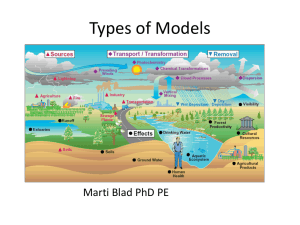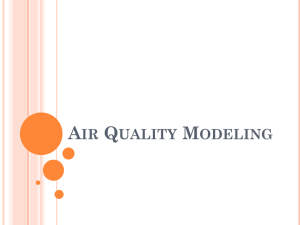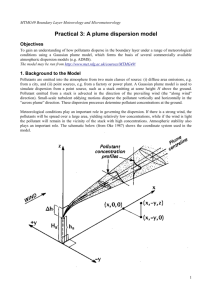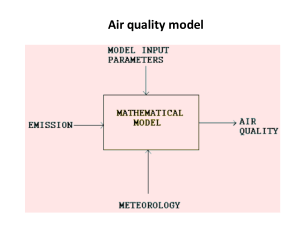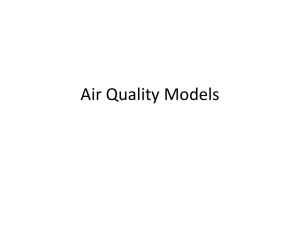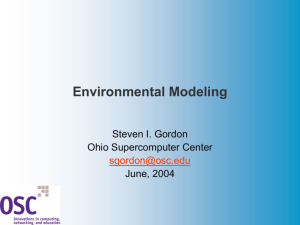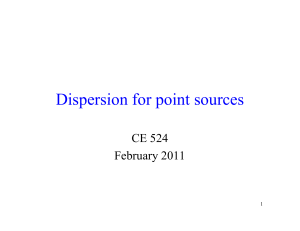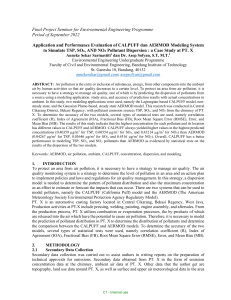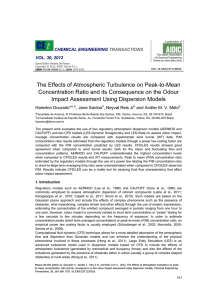Factors To be Taken into account in dispersion modeling:
advertisement
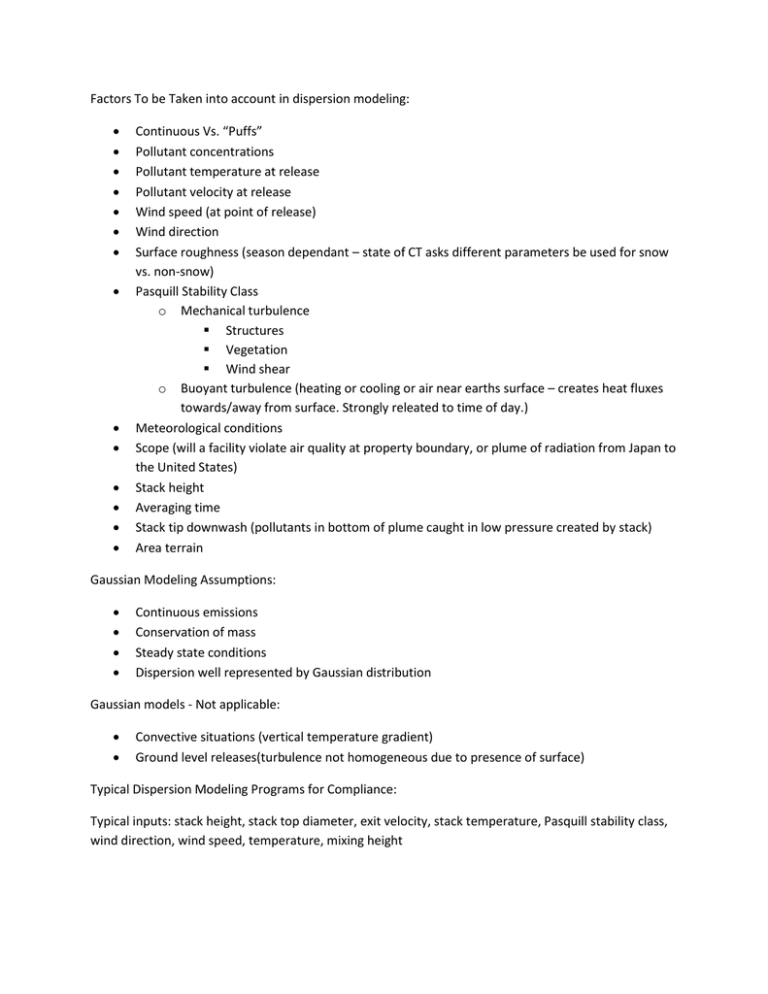
Factors To be Taken into account in dispersion modeling: Continuous Vs. “Puffs” Pollutant concentrations Pollutant temperature at release Pollutant velocity at release Wind speed (at point of release) Wind direction Surface roughness (season dependant – state of CT asks different parameters be used for snow vs. non-snow) Pasquill Stability Class o Mechanical turbulence Structures Vegetation Wind shear o Buoyant turbulence (heating or cooling or air near earths surface – creates heat fluxes towards/away from surface. Strongly releated to time of day.) Meteorological conditions Scope (will a facility violate air quality at property boundary, or plume of radiation from Japan to the United States) Stack height Averaging time Stack tip downwash (pollutants in bottom of plume caught in low pressure created by stack) Area terrain Gaussian Modeling Assumptions: Continuous emissions Conservation of mass Steady state conditions Dispersion well represented by Gaussian distribution Gaussian models - Not applicable: Convective situations (vertical temperature gradient) Ground level releases(turbulence not homogeneous due to presence of surface) Typical Dispersion Modeling Programs for Compliance: Typical inputs: stack height, stack top diameter, exit velocity, stack temperature, Pasquill stability class, wind direction, wind speed, temperature, mixing height Steps: Loop 1 o o Loop 2 o Loop 3 o Downwind distance/crosswind distance of the receptor from the source determined Pollutant concentration at receptor Plume rise/effective plume height for the meteorological condition for the hour Loop 2 executed for each hour taking appropriate meteorological conditions for each hour (meteorological data can be run from a different model) Typical outputs: highest and second highest concentrations for each receptor for averaging times (including 1 hour, 8 hour, 24 hour). Also average concentrations over a period of simulation (usually year) in tabular form Programs available: AERMOD – recommended by EPA for compliance modeling purposes AERSCREEN – screening version of AERMOD recommended by EPA. Gives absolute worst case scenario concentrations assuming worst case meteorological conditions. You can use AERSCREEN to get out of AERMOD modeling requirements. SCREEN3 – screening model recommended by CT DEEP. (Note –recommended by CT DEEP in guidance issued in 2009, prior to EPAs 2011 approval of AERSCREEN as an approved modeling program) Note – AERMOD, AERSCREEN, and SCREEN3 use the Gaussian distribution as a basis for calculations Other models: L1023 – available with Atmospheric Dispersion Estimates by D. Bruce Turner as an introduction to air dispersion modeling GaussianPlume.m – can provide visual 3-D plume
